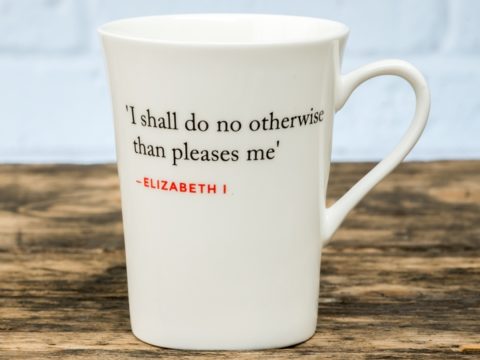Katherine Willoughby: Life Story
Chapter 6 : Dangerous Times
Gardiner, and the other conservatives, may well have been appalled by rumours that were current in the early months of 1546, that Henry was looking about for a new queen – the novelty of his marriage to Katherine Parr had worn off, and she had shown no signs of pregnancy. The lady whom the gossips named was none other than the widowed Duchess of Suffolk. Henry was reported by the Imperial ambassador to be showing her great favour, but the ambassador also noted that there was no change Henry’s behaviour towards Queen Katherine.
That the rumours existed is certain, that Henry had any such intentions is not. He liked witty women – wit had been Anne Boleyn’s chief charm – so an attraction to Katherine is quite likely, but that is a long step from marriage. Nevertheless, the rumours may have been a catalyst for those conservatives, led by Gardiner who wanted to oust Katherine Parr – and her heretical friends with her. It would be vital to remove Katherine as well – had Henry married her, the conservatives would have been out of the frying pan and into the fire.
The method of attack was through a Lincolnshire woman named Anne Askew (her married name was Kyme). The Askews were a well-established Lincolnshire family, with connections to the court, and the husband of Anne’s sister, Jane, was a lawyer within Katherine’s household. The family were early supporters of religious reform, and Anne, whose unhappy marriage to Sir Thomas Kyme led her to seek fulfilment elsewhere, became increasingly outspoken in proclaiming her beliefs, which were, according to the law as it stood, heretical.
In 1543, Askew returned to her brother’s house, either voluntarily or thrown out by her husband (reports differ). Francis Askew was also a reformer, and sympathetic to his sister’s views. The following year, she was in London. Anne’s other brother, Edward, had a place in Henry VIII’s Privy Chamber, and she had various other court connections, one of whom was John Lascelles, whose information against Queen Katheryn Howard had led to the queen’s execution. Anne lodged at The Temple, and it was probably there that she met her fellow religious reformers, Katherine Suffolk (if she did not already know her), Lady Hertford and Lady Denny.
Anne became something of a celebrity – she had an amazing knowledge of the Bible and facility in quoting it - and her personality, which shines from her later writings, gave her influence. Coming to the notice of the authorities, she, along with two friends, was arrested for suspected heresy. The trial collapsed as there were not the requisite number of witnesses willing to testify against her.
But Anne would soon attract attention from the king’s own council. She was arrested and examined, first by a London tribunal, then by Bonner, Bishop of London. Released, no doubt with dire warnings, she returned to Lincolnshire, but was arrested again in a major onslaught against heretics in May 1546. She and her estranged husband were brought before the council, ostensibly to discuss their marriage. Kyme was dismissed, but Anne was detained and questioned on her beliefs.
She prevaricated so far as she could, and was despatched to Newgate. Later, she was questioned by men (John Dudley, Lord Lisle, and William Parr, the queen’s brother) whom she believed, rightly or wrongly, to hold the same opinions about the sacrament of the mass (ie that the bread and wine were not literally the Body and Blood of Christ).
In June, she was tried at the Guildhall, and condemned for heresy. The matter, however, did not end there as Lord Rich, Chancellor of the Court of Augmentations, and Lord Wriothesley, the Lord Chancellor, took a hand. Anne was taken to the Tower, and was submitted to brutal questioning, including torture on the rack, to persuade her to implicate Queen Katherine and the queen’s friends. She was asked specifically about whether Katherine Suffolk was ‘of her sect’, but Anne would not be drawn, answering only that if she were to say anything against Katherine or the other ladies mentioned - Ladies Sussex, Hertford, Denny and Fitzwilliam - it could not be proved. She did admit that Lady Hertford and Lady Denny had sent her money.
The Lieutenant of the Tower, appalled at the treatment of Anne, went personally to the king to have it stopped, but investigation into the queen’s ladies and their reading matter continued. According to John Foxe (the only source of the information, but generally believed to be accurate), Queen Katherine, hearing that she was being investigated, ordered her ladies to hide the banned books, and used her knowledge of the king’s tendency to pardon those who were able to appeal to him personally, to circumvent the threat.
Following this scare, Queen Katherine, and by extension, her friends, kept a low profile with regard to their religious feelings. But they did not have long to wait. Henry VIII died at the end of January 1547, to be replaced by his son, Edward VI, and a council in which, contrary to Henry’s intention, one man took precedence – he was Edward Seymour, Earl of Hertford, quickly self-promoted to Duke of Somerset.
Katherine Willoughby
Family Tree




